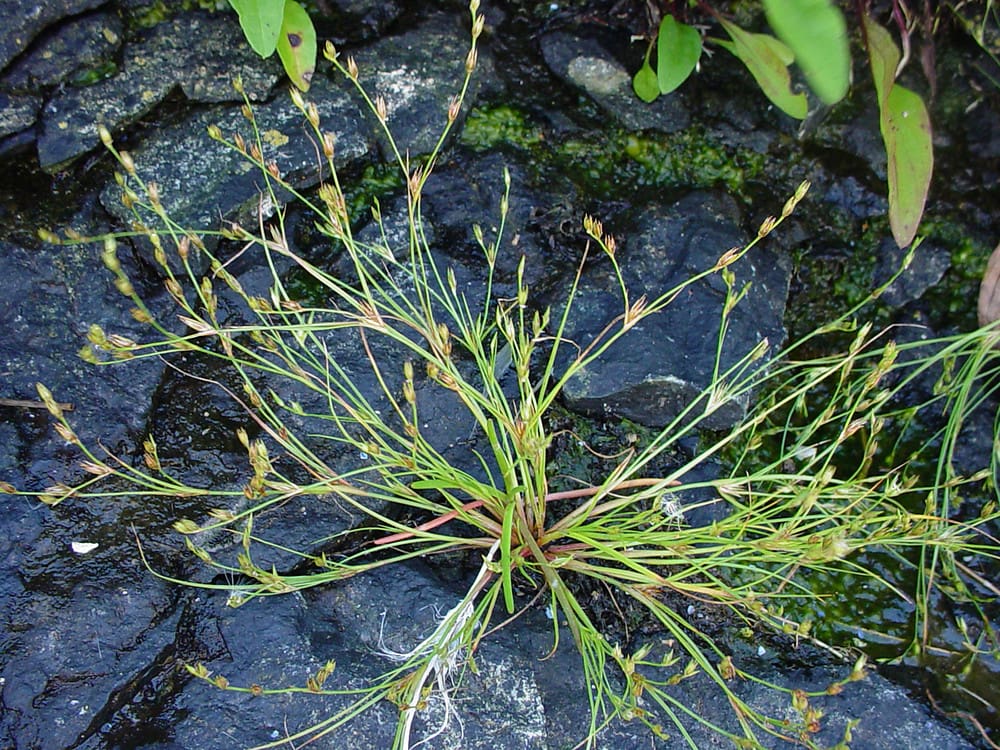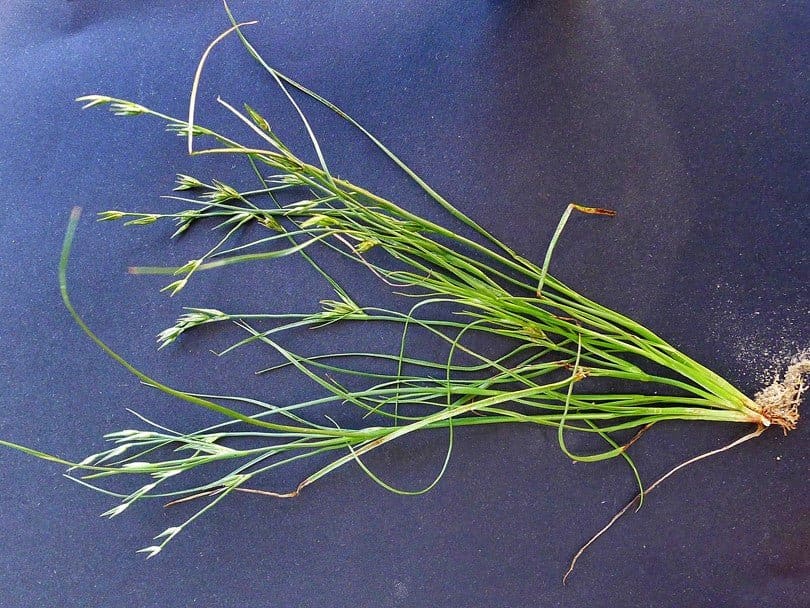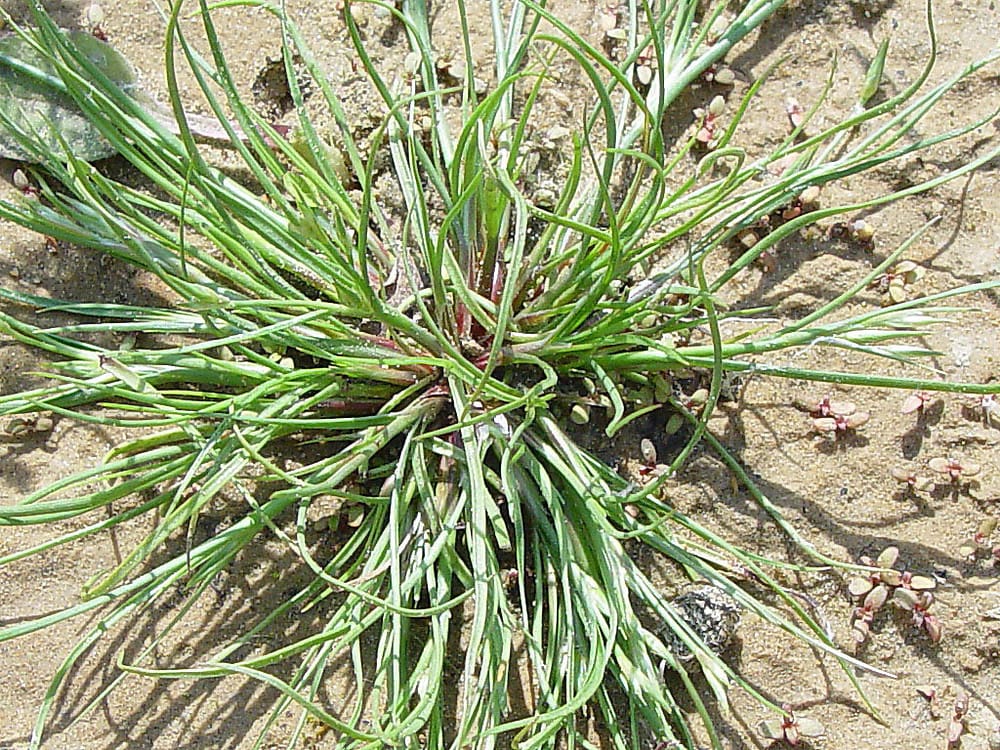Commencing your journey to explore the astonishing botanical universe, you hover over one peculiar species known as the aquatic plant Toad Rush. The dynamic ecosystem of freshwater marshes or other wet habitats is incomplete without this intriguing creation of nature. In this comprehensive article, you will traverse through its unique characteristics, growth habits, ecological significance and distribution across the globe. Your curiosity about this particular form of marsh vegetation will find its satisfaction in the detailed exploration and analysis provided.

Definition and Basic Description of Toad Rush
Toad Rush is a compelling example of nature’s evolutionary creativity in the plant kingdom, standing as a notable representation of the Juncaceae family.
Scientific classification of the aquatic plant
Toad Rush stands tall in the Juncaceae family under the Genus Juncus. Its full scientific name being Juncus Bufonius, the plant is classified in the Plantae kingdom. It is further classified into the order of Poales, belonging to the Tracheophytes division.
Common names for the Toad Rush
Apart from its scientific nomenclature, Toad Rush is known by several common names, including toad rush, toad’s rush, bufonius toady, and round-headed rush. These names, while reflecting the plant’s unique characteristics, bring forth its cultural significance in different parts of the globe.
Physical characteristics and structure of the plant
The physical characteristics of the Toad Rush render its recognition quite simple. Boasting stems that are generally smooth and round, the plant bears flowers of a simplistic beauty. The structure is further adorned with capsule-shaped fruits, adding charm to the overall appearance. Leaf arrangement is alternate in fashion, with a texture that is typically dry or hard, and the overall display is donned in green to brown shades.
Habitat and Ecological Role
Toad Rush plays a pivotal role in the ecological dynamics of its habitat. Its growth sites and adaptability are strongly corresponding with its environmental niche.
Where does Toad Rush typically grow?
Toad Rush typically grows in the damp and soggy environs, augmenting the beauty of swamps, roadsides, meadows and riverbanks. It prefers open habitats with bare muddy ground where competition is minimal.
Ecological role and importance of the plant in its natural habitat
The Toad Rush is a key player in the stabilization of the soil structure of its habitat. It effectively minimizes soil deterioration from erosion while serving as fodder for a range of insects, which are vital for the wider food web. The plant also serves as cover and nesting material for certain bird species, showcasing its ecological importance.
How it adapts to its environment
Toad Rush adapts effectively to its environment through rapid colonization and its high reproduction rate. The flexibility to grow in a variety of soil compositions is another testament to its adaptability.

Propagation and Growth Cycle
In the journey from seed to a fully grown plant, the Toad Rush follows a fairly standard timeline.
Life cycle of the Toad Rush
The Toad Rush life cycle begins as a seed, which germinates to give rise to a seedling. This seedling then elevates to a mature plant that flowers and bears fruit within a year, repeating the cycle.
Optimal growth conditions needed
The optimal growth conditions for Toad Rush embrace a wide spectrum of soil, ranging from acidic to alkaline. A well-drained soil puddled with moisture and ample exposure to sunlight are conditions the plant thrives in.
How the plant propagates and reproduces
The propagation of the Toad Rush encompasses an array of both sexual and asexual reproduction methods. This includes self-pollination, wind pollination and even vegetative propagation.
Water and Nutrient Requirements
The growth of the Toad Rush is necessitated by the right balance of water and nutrients.
How much water is needed for its growth
The Toad Rush typically thrives in damp habitats, indicating its preference for a fair share of water. Soggy and marshy areas work best for the plant, ensuring its moisture requirements are met.
Soil conditions and nutrients necessary
Like many plants, the Toad Rush is flexible towards a varying range of soil conditions. From clay to sandy soil, or even loamy and chalky soil, the Toad Rush is adaptable in nature.
How it obtains and utilizes these nutrients
The plant takes up nutrients from its surroundings through its root systems, capitalizing on the readily available nutrients in its wetland habitats. These nutrients then contribute to the various metabolic processes that occur within the plant.
Resilience and Survival Tactics
The Toad Rush employs innovative survival tactics to thrive in its natural habitat.
How Toad Rush copes with varying conditions
Toad Rush is a hardy plant that can cope well with varying conditions. Change of soil types, moisture alterations or even weather transitions do not deter the plant’s growth.
Survival mechanisms the plant employs during harsh conditions
In times of harsh conditions, the plant goes into a dormant state, shielding itself from potential harm. Its seeds can remain dormant in the soil for years, enabling it to survive in a multitude of climatic conditions.
Strategies for dealing with diseases and pests
To combat pests and diseases, the Toad Rush resorts to a built-in resilience. This resilience is a result of its natural design and evolution over ages, which nourishes a robust immune system.
Role in an Aquatic Ecosystem
Just as it adds to the aesthetic charm of the landscape it inhabits, the Toad Rush also plays an integral role in maintaining the ecological health of its environment.
Contribution to the biodiversity of its environment
The Toad Rush is vital to biodiversity, serving as both a habitat and food source for various insects and providing nesting material and concealment for a variety of birds.
Interactions with other organisms in the ecosystem
The species coexists in harmony with its neighbouring plants and assists in soil stabilization as well as nutrient cycling in the ecosystem.
Impact on water quality
With its propensity for damp and marshy terrains, the Toad Rush directly aids in the process of water purification, filtering pollutants and improving overall water quality.
Human Use and Economic Importance
Aside from ecological benefits, the Toad Rush also lends itself to various human uses, entailing economic advantages.
How humans have made use of the Toad Rush
Toad Rush has found roles in human life both as a decorative plant and as a biological indicator of wetland health. Moreover, the plant is known to be used in traditional medicine in some cultures.
Economic value of the plant
Its extensive distribution offers the potential for commercial landscaping and restoration projects, which in turn bolsters economic opportunities.
Any medicinal properties or other notable usages
While there is no documented evidence of the Toad Rush’s medicinal properties, some anecdotal references suggest its use in addressing health concerns in traditional healing practices.
Conservation Status and Environmental Threats
Despite its relative ubiquity and hardiness, Toad Rush faces some threats to its widespread existence.
Current conservation status according to International Union for Conservation of Nature (IUCN)
As of now, there is no conservation status designated for the Toad Rush by the International Union for Conservation of Nature (IUCN).
Environmental threats facing the Toad Rush
Some of the challenges faced by the Toad Rush include habitat loss and degradation, brought on by human activities such as urbanization and agriculture.
Efforts to conserve this plant
Conservation efforts are currently minimal for the Toad Rush. However, its significance in wetland ecosystems underscores the need for proactive conservation strategies.

Interesting Facts and Miscellaneous Information
There is always more than meets the eye when it comes to nature’s creations, and the Toad Rush is no exception.
Folkloric beliefs or myths surrounding the plant
Though not steeped in mythology, the plant’s name Toad Rush may stem from a common belief that toads often hide amidst the plant for concealment.
Unique characteristics that set it apart from other aquatic plants
Aside from the plant’s astonishing adaptability, the Toad Rush’s capability of thriving in a multitude of soil types sets it apart from many other aquatic plants.
Miscellaneous information that does not fit under the other categories
Among the more intriguing aspects of the Toad Rush is its propensity to bloom and seed year-round, a trait uncommon among most plant species.
The Future of Toad Rush
The future of Toad Rush, like many other species, hinges on various factors such as climate change and conservation efforts.
Potential impact of climate change on this plant
Given that Toad Rush is resilient and has high adaptability, it is likely that the species will demonstrate a considerable level of resistance to climate change impacts. However, unpredictably severe weather conditions could pose a threat.
Predicted trends for the species’ population and habitat
Unless significant habitat loss or other catastrophic events occur, the population and habitat trends for Toad Rush are predicted to remain stable.
How can we ensure its survival for the future generations
Ensuring the survival of Toad Rush involves both protecting its natural habitats from degradation and promoting awareness about the importance of this plant to ecosystem health and resilience. By maintaining the health of wetlands and other habitats where Toad Rush thrives, we can help secure its long-term survival.
In conclusion, although often overlooked, the Toad Rush is a resilient emblem of biodiversity, encapsulating co-evolution, adaptation, and ecological significance. This mighty plant not only enriches the landscapes it populates but also offers unspoken services in regulating ecosystems.

